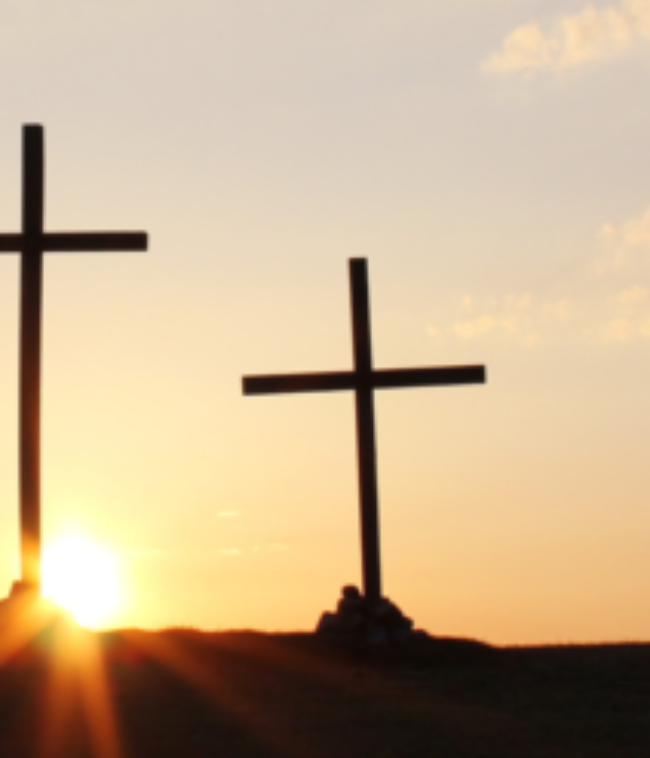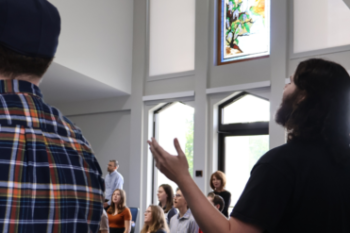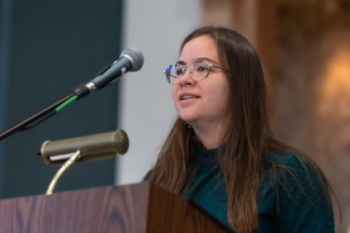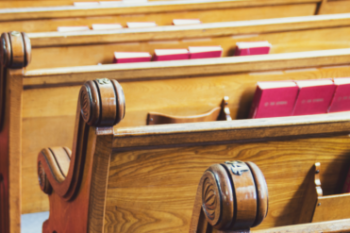Here We Are Again: The Easter Sermon
Everything dies, baby, that’s a fact
But maybe everything that dies someday comes back
– Bruce Springsteen, “Atlantic City”
It turns out that Easter is on a Sunday this year, so we should probably start talking about what we’re going to say in the sermon! For all kinds of reasons, the Easter sermon can be a tough one to piece together. It is about the resurrection, after all, and that’s not an easy thing to work through in a short message. The pressure to “get this one right” is very real, especially if you’re in the early years of ministry.
I have some ideas to share, but first, let’s talk about the top two mistakes we tend to make with our Easter sermons.
Mistake #1 – Trying Too Hard To Say Something New
There’s a real pull to the fringes of the Easter story where we might find something fresh and yet-to-be-known, but just so you know: there’s nothing there. You’ll say things, of course, that will sound new to some of your listeners, but the information won’t actually be unprecedented. So don’t put stress on the story to give away more than it has to give or to stretch it beyond its own limits of history and theology. This just creates confusion. You’ll also sound weird and desperate. It’s more than okay to simply retell the story as we have it and to remind people that the mystery of such an event is also the basis of hope for our world.
Mistake #2 – Trying To Prove The Resurrection
Follow this story back to its origins and what you run into is testimony. That’s it. The whole of the Christian faith is based entirely on the testimonies of people who said they saw Jesus alive when he should have still been dead. Are those testimonies true? I believe so, but using a single sermon as a proving ground for such a story is beyond the normal levels of confidence.
I tried this one Easter by interviewing my brother instead of giving a sermon. Between our advanced degrees in Biblical studies and theology, we figured we could offer a compelling case for the resurrection, but the number one piece of feedback we got from that morning was, “That was interesting.”
When I think about something like a resurrection, “interesting” is a bit of a downgrade.
The balance seems to be in retelling the story as it reads, and doing so with a genuine pastoral sense of how the resurrection becomes a filter of hope through which we see and engage the realities of the world we all share. This allows us to tell the “old, old story” from a local perspective, a chance to overlay the implications of the resurrection on the worlds we each inhabit, and to remind our people that resurrection is a way of being in the world.
The balance seems to be in retelling the story as it reads, and doing so with a genuine pastoral sense of how the resurrection becomes a filter of hope through which we see and engage the realities of the world we all share.
I’m a lectionary preacher so I have the choice between Mark and John as this year’s Gospel text for Easter Sunday. But you may fashion your preaching based on different needs and formats, so whatever text you’re preaching this year, here are some things I’ve found in working with all four Gospel accounts.
Perhaps these will give you some ideas for what you might say this year.
Gospel of Matthew – I like Matthew’s earthquake, which doesn’t show up in the other Gospel accounts. And with Matthew’s interest in Old Testament images, I suspect this earthquake has its place in the story as a metaphor for the change the resurrection has wrought. The resurrection has upended creation and changed the landscape of the world we were once familiar with, and now we must learn to walk this earth on new pathways. Everything about what was once known has been rearranged. We are walking in an altered creation.
Gospel of Mark – I like ending this one at 16:8, most often seen as the original, older ending of the story. Verse 8 has the story ending not in joy, but in fear. The two Marys and Salome are commissioned to tell the disciples what they had seen, but Mark indicates that because of fear (trauma?) they hold off on sharing the news. Could Mark be baiting us to decide what we would do in that situation? Could he be irritating our own doubts and fears surrounding the resurrection? How might we finish this unfinished scene?
Gospel of Luke – All four Gospel accounts place the women at the forefront of the Easter moment, but I’m most often drawn to this part of the story in Luke’s version. The origin of the Christian movement was in the voice of women, a bold move on the part of God and the Gospel writers in their mentioning of this fact. Whatever the resurrection will ultimately come to mean, we see here in the first moments that we’re dealing in major reversals.
Gospel of John – I like that John is telling a new creation story through the life of Jesus, introducing us to his story with the words, “In the beginning.” (Jn 1:1) John also wants us to count the “signs” that Jesus performs, numbering the first two for us as motivation to follow along (Jn 2:11, 4:54). Each sign could be seen as another “day” of creation. But the resurrection appears to be an eighth sign, throwing off the “seven-day creation” story. Or does it? Justo Gonzalez weighs in:
“Christians, as well as Jews, did not believe that the repetitive cycle of a new week following another, and a new year following another, would be endless. There would be a day when that cycle would be broken, and a new age would dawn. This would be a final Sabbath, an eternal day of joy and rest. Given their observance of the Lord’s resurrection on the first day of the week, and the manner they related that day with the first day of creation, Christians would soon point out that the first day of the week was also the eighth, and that therefore what they celebrated on that day, besides the resurrection of Jesus and the beginning of a new creation, was also the promise of the eighth, the beginning of eternity.” (A Brief History of Sunday, p.29)
The eighth sign in John’s Gospel appears to be the resurrection, which happened in a garden at the start of a new week, and a garden is where the world began. The new creation is underway.
So there you have it.
Whatever you end up writing and from whatever angle you show the Easter story to your people, the main flooring of your sermon should be to help the church imagine a life in the world animated by the power and the glory and the hope of the resurrection. Easter is not an aside, it’s how we are called to live.
Grace and peace.





